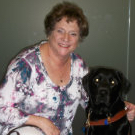By Dorianne Pollack, disability resources coordinator
I spent almost all of my childhood and young adult life trying to hide my disability from others. After all, if anyone knew I had a disability, they wouldn’t play with me, choose me to be on their team for kickball, and as I got older, date me, include me in a club, or believe that I was smart.
You couldn’t see my disability when I was young. The advantage to this is that I could pretend that I didn’t have a disability. No one had to know that I was limited.
The disadvantage to my hidden disability was that I had to pretend that I was normal.
My self image was formed by what others thought of me. Every social exposure to the world was precluded by the worry that someone would know my secret. Or that I wouldn’t be able to participate in an activity. I could never leave the house with a carefree feeling of confidence.
The Civil Rights Movement and consequent laws came about, the 1960’s were in full swing, and an awareness of self and others began to become part of our consciousness and thinking.
I still had a disability. I still tried to hide it. And I still felt as if I wasn’t as normal as my friends.
Then early in my teaching career, laws took center stage regarding children and adults with disabilities.
Education evolved to include all student learning. NO. Things were not and are not perfect. But the more we visit our social constructs of thinking and behaving, the closer we get to social solutions that suit all individuals. Not just those without disabilities.
I am so lucky to be working in the 21st century when the disability conversation is critical for all of us. And in a time when sharing our social stories can bring a positive change to all.



